100 years of Russian glory. Russian cavalry: lancers, dragoons, hussars
To begin with, we will at once omit the customary reasoning that the machine gun and the magazine rifle reduced the role of cavalry to some kind of auxiliary type of troops. In World War I, especially on the Eastern Front, cavalry was still a mobile strike force of troops, capable of having a significant impact on the course of the battle. The question basically was the ability to apply it.
The traditional role of cavalry in battle is an open attack, which had the name of "horse shock." That is a cold blow weapons on the enemy being forced to defend himself, his capsizing in a short-term furious attack and subsequent destruction. Either the oncoming battle cavalry of the two sides.
Yes, the machine gun significantly complicated the actions of cavalrymen in terms of performing the task of an open strike. But in the course of the war, the use of cavalry gradually changed, adapting to the existing conditions.
Especially on the Eastern Front, which was distinguished by large spaces and a low level of fire weapons per unit area. There the cavalry was used more actively.
Cavalry was used for reconnaissance, while pursuing a retreating enemy, bypass maneuvers and close combat. In addition, horses at that time were still the only means of rapid deployment of troops in the absence of roads.
On the Eastern Front, in contrast to the Western, the value of cavalry in battle remained high. An example is the Russian strikes in East Prussia, Galicia, Poland, and the German strikes in Lithuania and Romania.
At the beginning of the war, the Russian army received an 124 regiment of army cavalry, and by the end of 1917, it had up to two and a half hundred cavalry regiments (mostly Cossack, but Cossacks are worthy of a separate topic).
The cavalry of the Russian Imperial Army was the most numerous and prepared not only in Europe but also in the world. So say many experts, including foreign ones.
If the Russian cavalry did not fulfill all the tasks that were set before it, then the reason for it was not the reduction in the number of cavalry or its backwardness, but in many respects the failure of the equestrian command.
Intelligence was considered one of the main tasks of the cavalry before the war. And not only the near, front of their combined-arms units, but also the furthest - in the rear of the enemy. This refers to the intelligence that provides commanders with valuable operational-tactical information.
Development aviation actually deprived the cavalry of this type of action. The progress of technology (cameras, airships, airplanes) has turned the tide with obtaining intelligence in favor of technical means. Aviation almost completely replaced cavalry as a means of long-range reconnaissance.
Nevertheless, the Russian cavalry continued to remain the main branch of the army. At least in last place in the triad after the infantry and artillery.
Since 1882, the Officer Cavalry School has become a forge of cavalry personnel. Initially, this training was limited to an ordinary set - the theory of tactics and the practice of horse riding. Gradually, the case was pulled up to train cavalry officers to act in war.
With the appointment of A. A. Brusilov (1902 - 1906) to the post of school head, the case was finally put on the basis of preparing the cavalryman for war. General Brusilov’s school, and then the entire cavalry, were obliged to introduce a new horse dressage system (Phyllis system), which at first had many detractors, new tactics. The energy of Brusilov was envious, and the general gained a reputation as an unprincipled careerist and intriguer.
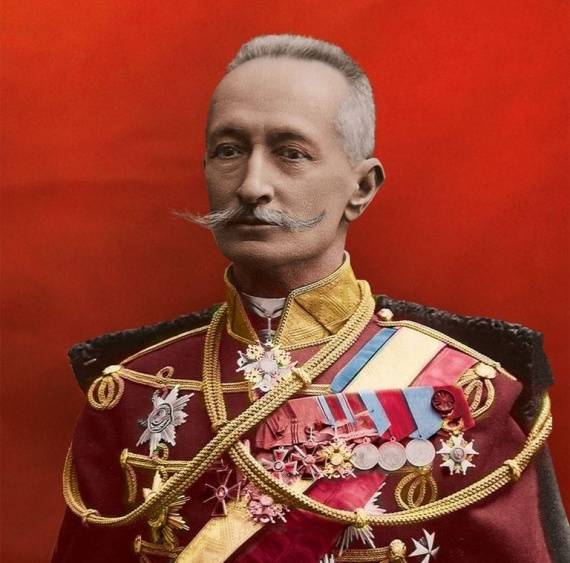
The last remark relates to the popular belief that it was A. A. Brusilov who removed his predecessor from his post. But, as practice has shown, intrigue is often bringing considerable benefits.
1912's "Instruction for cavalry classes" stated that a cavalry unit is considered prepared if it is able to complete all the tasks ahead of it in wartime. Among these tasks, the following skills stood out:
attack in the equestrian order all kinds of enemy troops;
prepare the success of horse attack by fire;
freely maneuver in any terrain, without disturbing the order of movement, overcoming obstacles and applying to the terrain;
act in a hurry order offensively and defensively;
to go hiking both day and night;
carry the service of security and intelligence as a hike, and at the bivouac.
Before the war, the Russian army consisted of twenty-one dragoon regiments, seventeen Uhlan regiments, eighteen hussars.
But there was no particular difference in the types of cavalry, with the exception of dress uniform, by the beginning of the 20 century. All RIA cavalry in its essence turned into a dragoon - horsemen, in appearance similar to infantry, armed with a rifle, pistol, saber and lance.
The exception was the Cossacks. But I repeat about them, let's talk separately.
Each cavalry regiment consisted of six squadrons (hundreds). The squadron, according to the state, numbered five officers, twelve non-commissioned officers, three trumpeters and one hundred twenty-eight rank and file lower ranks.
According to the states, each division consisted of a horse-sapper team, which was supposed to have eight motorcycles and one passenger car.
The horse-artillery division, attached to the cavalry division, consisted of two batteries of six light guns (76-mm). Each battery had a thousand rounds of ammunition, including 144 grenades, and the rest was shrapnel. By the beginning of the war in the Russian cavalry, there were sixty-five horse batteries of six guns. In 1914 - 1917 Forty-two more equestrian batteries were formed, mostly Cossacks.
In addition, the cavalry division had a divisional machine-gun command of eight machine guns. The benefit of machine guns for equestrian units recognized already in the course of the Russian-Japanese war 1904-1905. In service initially were Madsen machine guns, which were later replaced by Maxim machine guns.
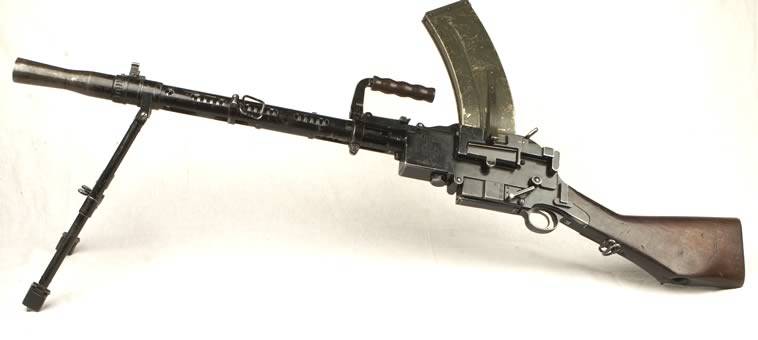
In addition to the divisional machine-gun team, there were also regimental teams of machine-gunners, modeled on infantry and armed with Maxim machine guns. In 1912, there were twelve Maxim machine guns in the cavalry division. These were Maxim's machine guns. Both the machine gun itself and the machine system of Colonel Sokolov, who specially designed it for cavalry in 1910, were transported in the packs.
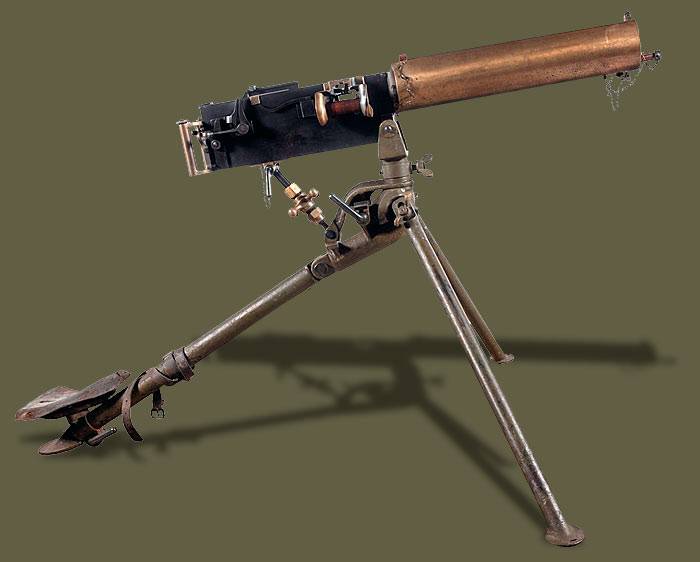
Opponents, the Germans, also attached great importance to machine guns and attached to each cavalry division a separate machine-gun battery of eight machine guns. In addition, each cavalry division was joined by a rangers battalion with its machine-gun company (six more machine guns).
The cavalry of Austria-Hungary at the beginning of the war had no machine guns at all.
Russian cavalrymen were armed with checkers and three-line rifles with a bayonet (Cossacks had a rifle up to 1915 of the year without a bayonet).
Shortly before the war, regular cavalry, like the Cossacks, received spikes. At first, this innovation caused a lot of complaints and discontent, as the peaks turned out to be a thing that was extremely inconvenient in the march. However, with the opening of hostilities, the troops were convinced that in the equestrian battle of the peak it was simply irreplaceable, being a much better weapon than a saber. The same famous Cossack K. Kryuchkov also accomplished his feat, acting with a lance, and not with a sword. So, pretty soon, non-commissioned officers, and even some of the young officers who were directly involved in equestrian clashes, also armed themselves with picks.
Under Emperor Alexander II, the cavalry division consisted of three brigades — the dragoon, lancer, and hussar divisions. In the era of Emperor Alexander III, in connection with the general unification of the cavalry of the Cossacks, it was decided to combine with regular cavalry. Under the last emperor Nicholas II, the latter organization was preserved.
At the same time, it was believed that the Cossack hundreds did not have the striking force that is characteristic of close, slender squadrons of regular cavalry. On this basis, it was recognized for the benefit of the cavalry divisions to make up of four regiments of six squadrons: the dragoon, Uhlan, hussar and Cossack. Such an organization was supposed to lead to the fact that from close unity with the Cossacks, regular regiments would be improved in the guard, intelligence services, guerrilla actions and, in general, enterprises of the so-called minor war. On the other hand, it was expected that the Cossacks would acquire the skill to close attacks, developing for this the proper strike force necessary when meeting slender enemy attacks.
I would like to say a few more words about horses.
For the Eastern Front, the horse was the only available and only possible vehicle at the beginning of the twentieth century. Neither the railway nor the car in 1914-1917. could not replace the usual horse in the fight in the East. Moreover, the more the war dragged on, the more, due to the deterioration of the car-locomotive fleet, the role of the horse increased.
The total number of horses in 1914 is presented in the following approximate figures: Russia - almost 35 000 000, USA - 25 000 000, Germany - 6 500 000 4, Austria-Hungary - 000 000 4, France - more 000 XNXXXNXX000, Austria-Hungary 2 000 000, France over XNUMX XNUMX, NNXX XNUMX XNUMX XNUMX XNUMX XNUMX.
As can be seen, the number of horses in Russia exceeded their number in all the great powers of Europe combined. And especially characteristic comparison of the number of horses per capita in Europe. In Russia, one workhorse accounted for seven people, in Germany - by fifteen, in France - by twelve, in Austria-Hungary - by twenty-nine people.
And do not tell tales of high mechanization in these countries. The peasants did not plow in Europe on tractors.
With regards to the acquisition of cavalry horse composition.
Horses in the army were divided into several categories, being designed for various functions. The horses supplied to the troops, depending on their qualities, went to the cavalry, artillery (including machine-gun teams) and carts.
Accordingly, the prices of horses of different categories were also different: the prices of riding and artillery horses were one and a half times higher than the prices of the horses of the 2 category. At the same time, the prices of the military department, according to which horses were taken to the troops, could differ significantly from the market prices of the horse. For example, a riding horse cost 355 rubles, an artillery 355, a convoy of the first category 270, a denomination of a second discharge 195 rubles for the head.
In the carts were ordinary peasant horses. In the artillery - peasant and steppe horses, more durable compared with the main mass of horses.
The cavalry was supposed to be equipped exclusively with race horses. At the beginning of the century, such race rocks as Tekinsk (Akhal-Teke), Streletskaya, Oryol, Race, Don, Kabarda, Terek were grown in Russia. The main suppliers of combatant horses are private steppe Don stud farms of the Voronezh and Rostov gubernias. Also riding horses gave Kherson, Yekaterinoslav, Taurian provinces.
The peacetime repair system consisted of the following process: the repair commission bought a horse of the year 3,5. This horse went to the reserve cavalry regiment, where during the year it was brought up and trained. In the fifth year of her life she entered the regular regiment: “Only a five-year-old horse develops enough to let her go to work.”
A year later, the horse passed the exam, after which it was finally put into operation. At the same time, in the year before the exam, it was impossible to put a horse into service and send it to the teachings with gaits.
Of course, in wartime conditions, this situation was violated. But this does not give the right to "experts" and "historians" to talk about the Russian cavalry, which fought on the tortured peasant horses. And it gives us the full right to send such "experts" to hell.
As an example, I would suggest that readers familiarize themselves with the works of the famous Russian and Soviet reporter Gilyarovsky. In those years, he was engaged in the selection and distilling of horses for the army. Who cares - the book is called "My wanderings."
On the form of cavalrymen Ria.
Speaking about the form of wartime, of course, we mean hiking / field form. The uniform of the cavalry, of course, differed, but here we touch only the field.
The field (marching) uniform for cavalry was introduced on the eve of the First World War. For the cavalry she included:
cap or hat (in winter);
single-breasted coat (in summer) or marching uniform (in winter) among officers and a tunic in lower ranks; harem pants tucked into high boots with spurs;
epaulets (for lower ranks marching epaulets);
hiking gear (officers) or belt (lower ranks);
brown gloves (officers);
a strap on a belt belt and a revolver with a traveling cord (officers) or
a sword, a steel lance without a weather vane, a revolver, a dragoon rifle and a cartridge bag (lower ranks).
Protective cap greenish-gray color, with protective leather visor, cockade, chin strap.
The dragoon, lancer, and hussar regiments practically did not differ at all in terms of form.
Dragoons
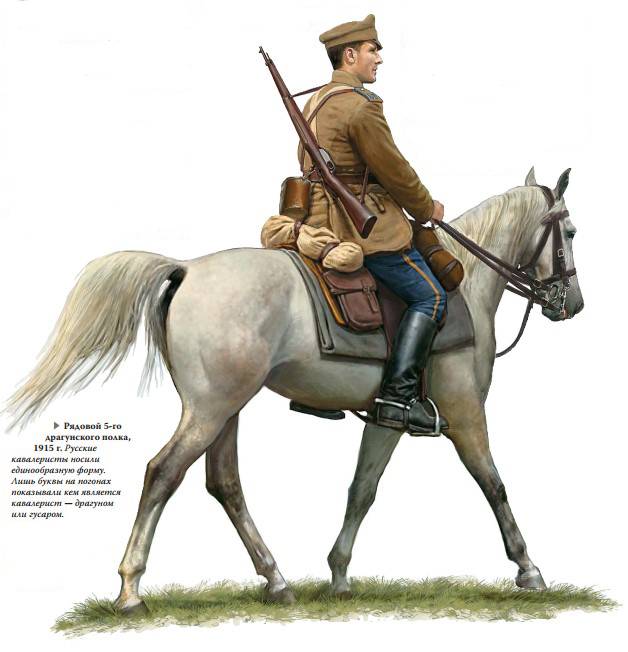
The shape of the dragoons was reminiscent of an infantry, only the uniforms were distinguished by cuffs with toes. The shoulder straps were trimmed with uniform-colored edging: black at the lower ranks and dark green for officers. The marching epaulettes of the edges did not have, on them was placed the number and next to it - the capital letter “D” of light blue color or the monogram of the regiment for nominal regiments.
The edges of the trousers were of different colors, in accordance with the color of the regiment.
Lancers.
The lancers wore a uniform similar to the dragoon, the shoulder straps were with dark blue edging from officers and without edging from the lower ranks. On the pursuit were the number of the regiment of light blue color and the letter "Y" or a monogram for nominal regiments.
Lancers wore gray-blue trousers with colored edging, also dependent on the number of the regiment. The equipment did not differ from the dragoons' equipment, except that about a quarter of the personnel of each regiment were armed with lances without flags.
Polish lancers wore breeches with scarlet stripes.
Hussars
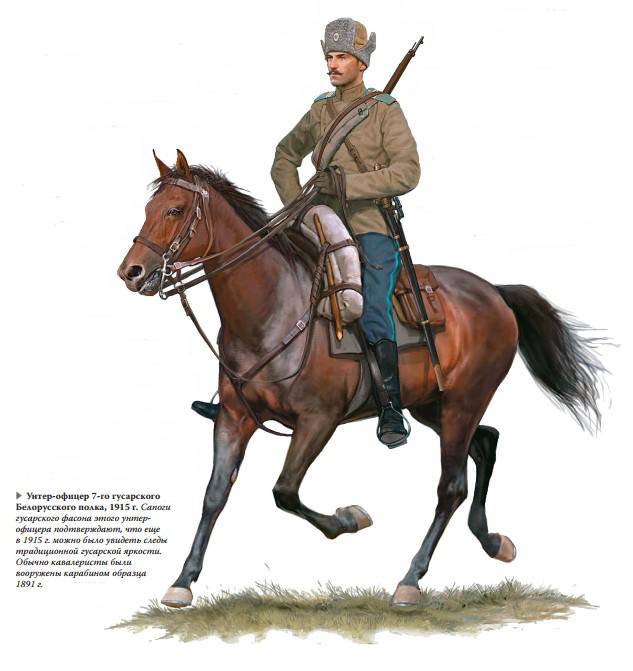
Regarding the marching form, the hussars followed the style adopted by the dragoons, although officers often continued to wear red breeches (chakchirs) and shoulder straps with zigzag galloons.
The shoulder straps of the rank and file did not have Kant; the regiment number and the letter “G” of light blue color or the monogram of nominal regiments were located on them.
Summing up some intermediate result before thoroughly undertaking a review of the actions of the Russian army and its command, it is worth saying only that we are dealing with a global rewriting. stories, Unfortunately.
For so many years, we were hammered into our heads that the Russian Imperial Army was numerous, but poorly armed with all the old-fashioned trash that it was impossible not to believe.
Yes, RIA was not technically advanced. But also a gathering of "cannon fodder" sent for slaughter, was also not in any way.
In principle, this whole cycle of “100 years of Russian glory” can be regarded as an apology and confession to the soldiers, officers and all who stood behind them in Russia.
It was an army that can and should be proud of.
Sources:
North D. Soldiers of the First World War 1914-1918
Oskin M. The collapse of the horse blitzkrieg. Cavalry in the First World War.
http://borisovdimitry.livejournal.com/115189.html.
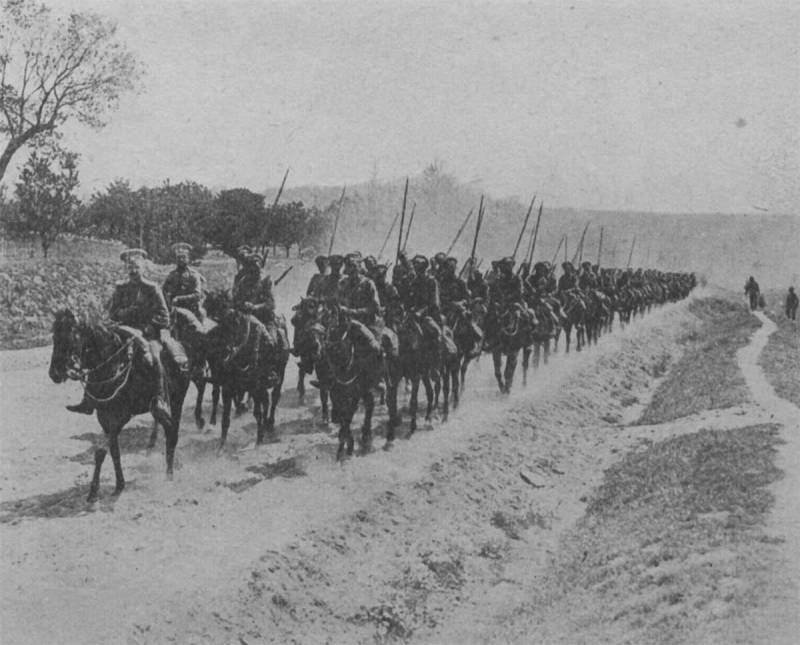
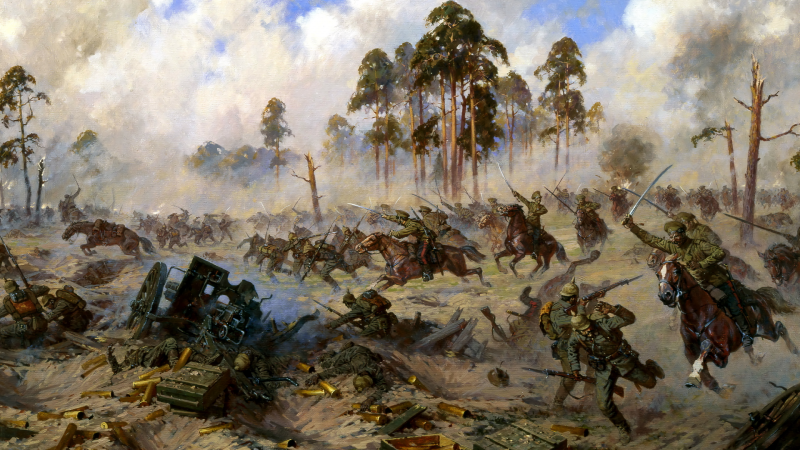
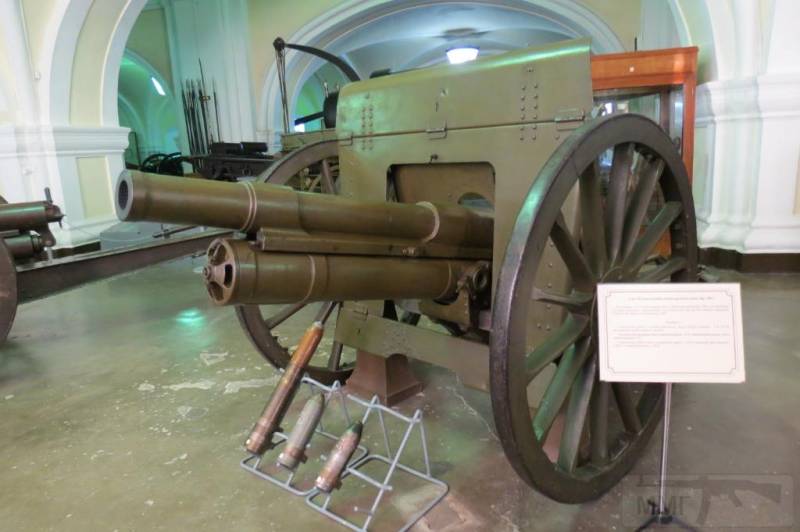
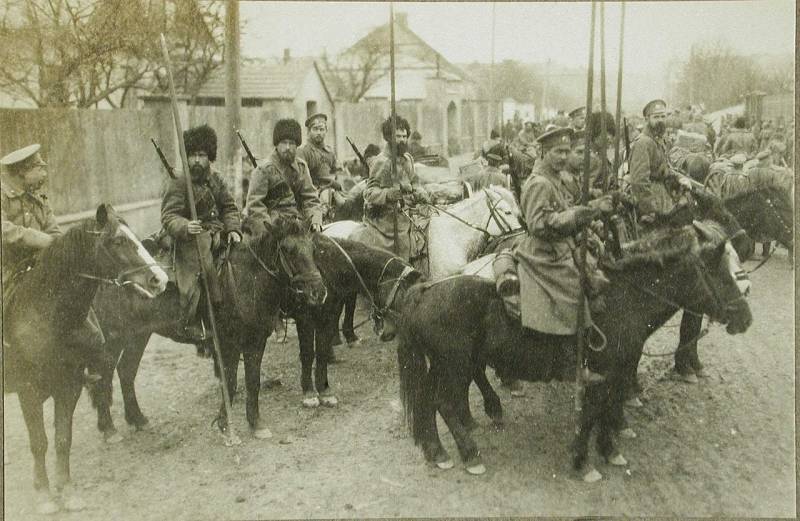
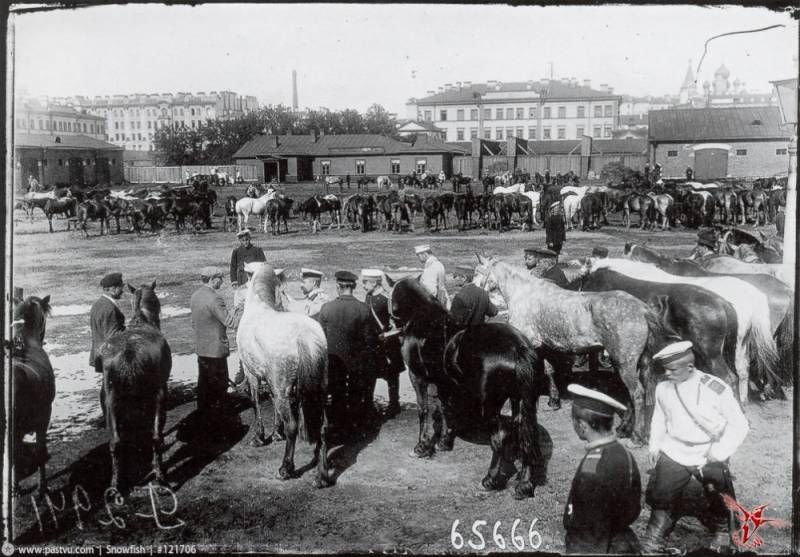
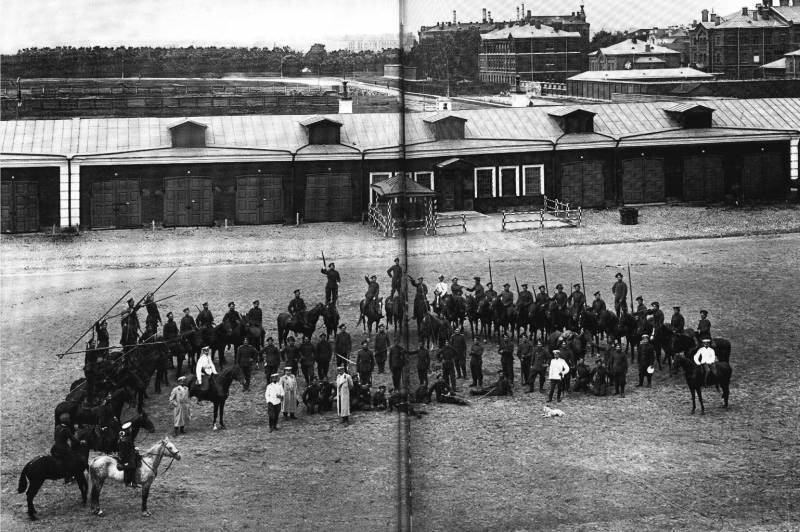
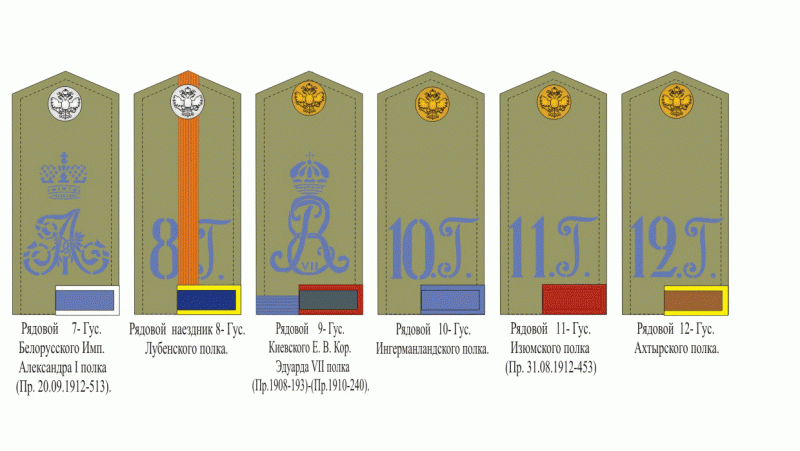
Information